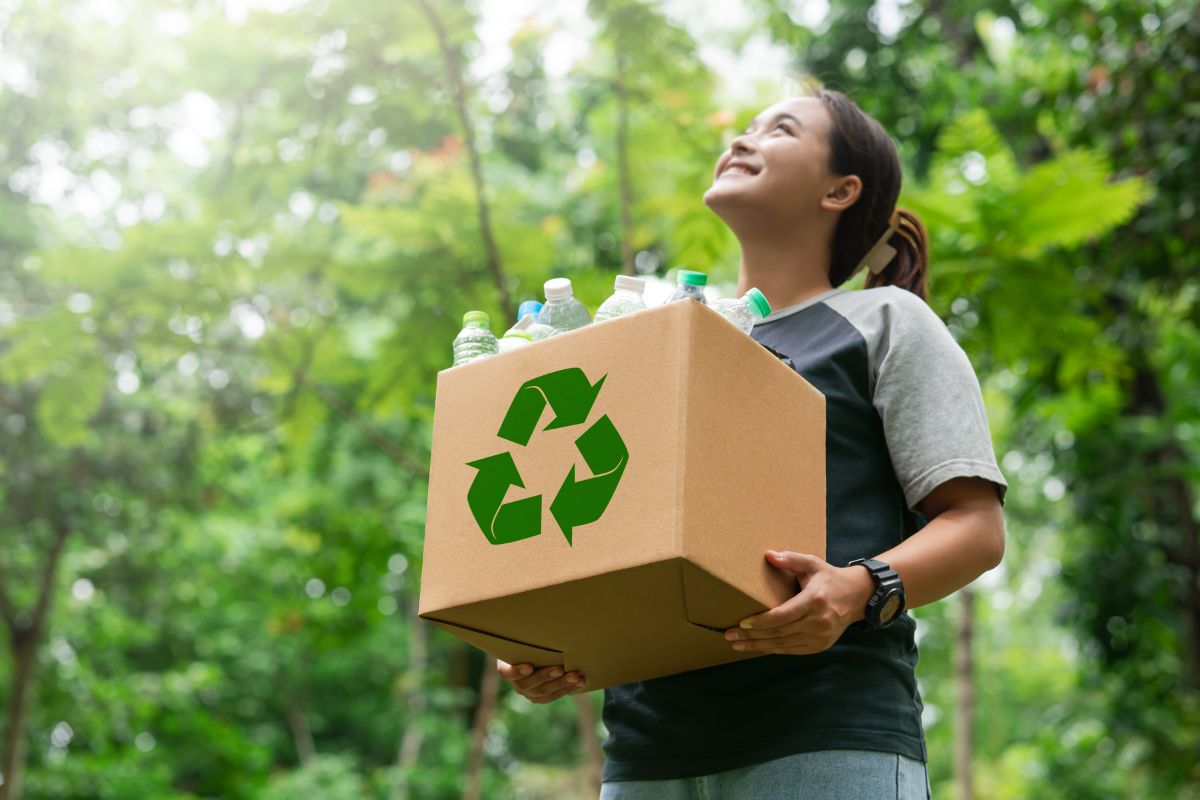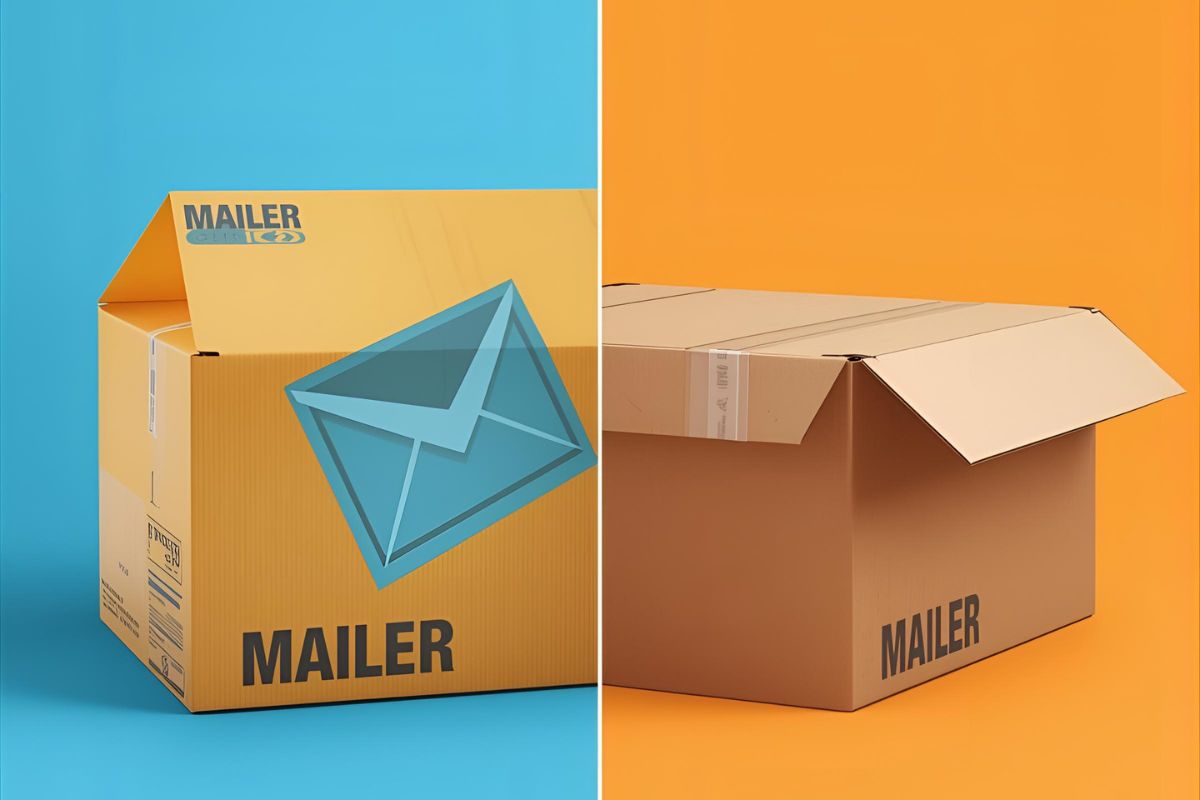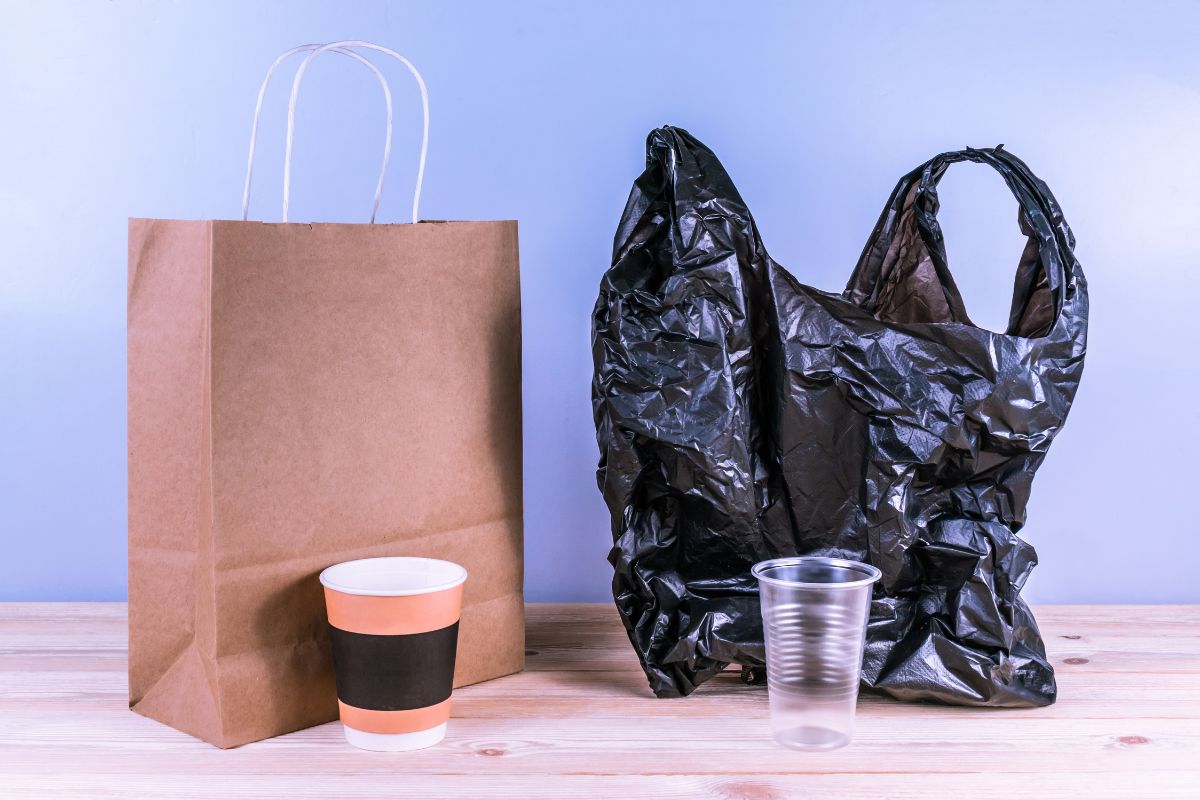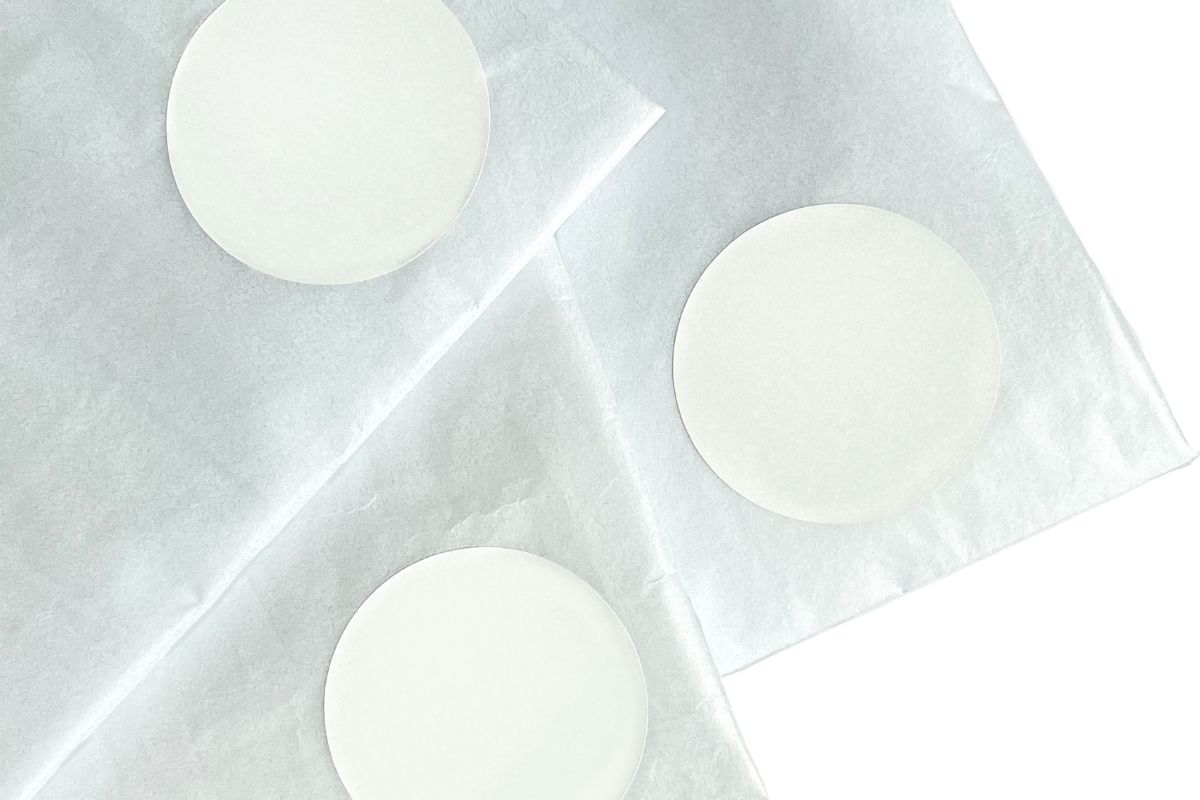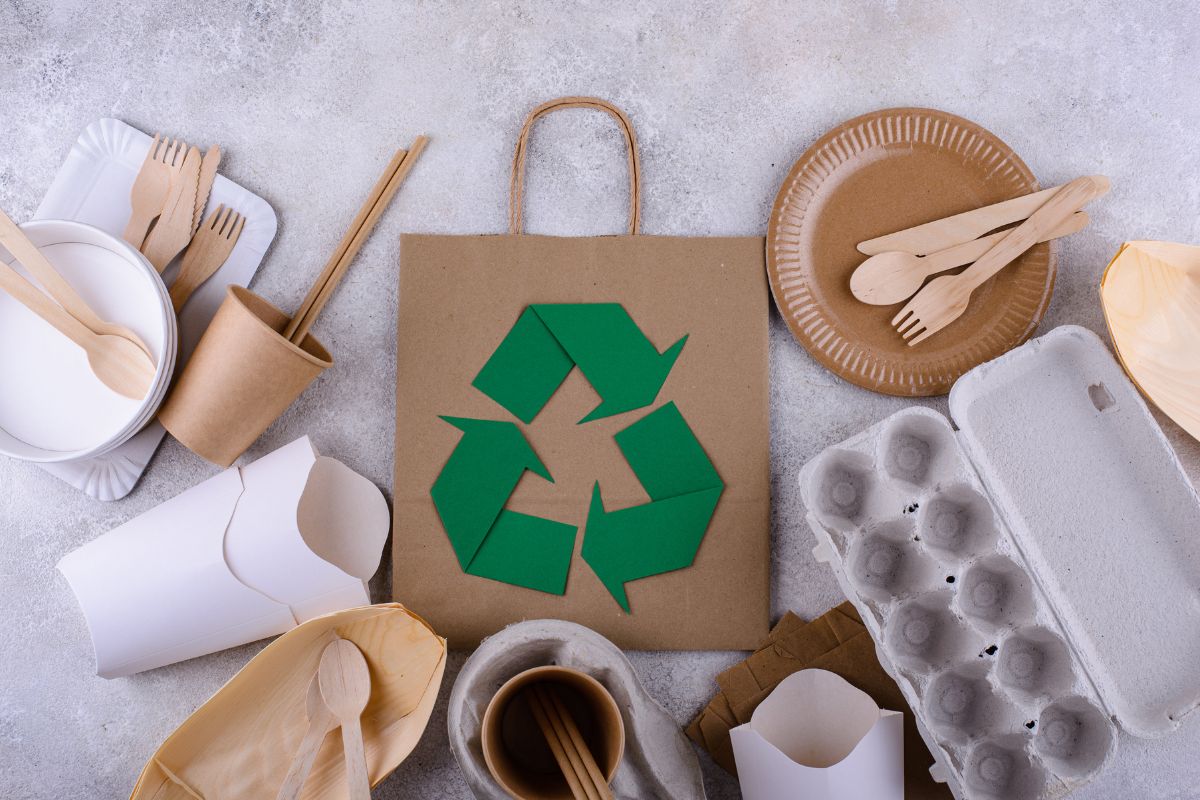If you’ve ever researched recycled packaging, you’ve likely come across two terms: pre-consumer and post-consumer recycled content. At first glance, they may appear to be similar, but they actually describe completely different stages of recycling.
Pre-consumer content is made up of leftover materials from the manufacturing process, whereas post-consumer content is made up of products that have already been consumed and recycled. Both have their place in packaging, but the impact and benefits are different.
In this article, we’ll explain what each one entails, why brands usually prefer post-consumer materials, and how you can select the best option for your packaging needs.
What Does Post-Consumer Recycled Even Mean?
Post-consumer recycled content is material that has served out its full life cycle – consider that plastic water bottle you placed in your recycling bin a week ago or the cardboard box from your recent online shopping binge.
These materials go through quite a journey. They’re gathered from homes and businesses, sorted through Materials Recovery Facilities (MRFs), washed, processed, and recycled into new packaging material. It’s like giving your old plastic bottle a full transformation so it can become your next polybag.
The post-consumer market for plastics is also booming. In Canada alone, the market produced $1,033.4 million in 2023 and will grow to a staggering $2,144.5 million by 2030 – a 11% per annum growth rate! These figures say one thing: companies are taking post-consumer waste recycling seriously.
Understanding Pre-consumer Content: The Manufacturing Leftovers
Now, pre-consumer material (referred to sometimes as post-industrial waste) is completely different. This is the material that never reaches your hands to begin with. When companies are producing plastic bottles, for instance, there’s always excess material – scraps, trimmings, or bad pieces that didn’t pass quality checks.
Rather than throwing these materials away, intelligent manufacturers gather them up and recycle them back into their operation. It’s similar to how a chef will take vegetable scraps and use them to create stock – nothing is wasted.
The key difference? Post-consumer recycled materials are obtained from finished goods that consumers have used, while pre-consumer waste is directly from the factory floor before it even reaches a consumer.
Why So Much Buzz Around Post-Consumer Waste?
Pre-consumer waste is relatively clean and simple to recycle since it has not been tainted with labels, inks, or adhesives. It’s more valuable to manufacturers by its nature since it is easier to process.
Post-consumer plastic, on the other hand, is messy. It has stickers, product residue left over after use, and other impurities that make recycling difficult.
Therefore, recycling of post-consumer waste is ultimately what minimizes the quantity of material that ends up in landfills and rewards recycling systems. When companies purchase materials with a larger proportion of post-consumer recycled material, they drive market demand that incentivizes improved collection, sorting, and reclaiming infrastructure — and aids the entire circular economy to advance. Simply, purchasing PCR directs money and demand to where it does the most good.
The Tradeoffs With The PCR
- Performance & contamination. Post-consumer streams tend to be more contaminated (inks, labels, adhesives, mixed polymers), and so PCR might be less reliable than pre-consumer recycled resins. That affects clarity, tensile strength, and occasionally food-contact or high-heat processability.
- Cost. PCR may be more costly than virgin or post-industrial in certain markets due to collection and processing expenses, but that margin is closing as volumes and technology increase.
- Feasibility. For certain uses (thin film, high-clarity packaging), you might require a mix — i.e., 30–50% PCR with virgin or post-industrial to achieve strength and appearance goals. Eco-leadership brands are encouraging higher PCR percentages, but technical feasibility remains an issue.
Tech is Moving The Needle: Sorting, Chemical Recycling, and AI
Good news: advancing sorting technology (hyperspectral imaging, AI-powered robots), more effective decontamination, and even chemical recycling are broadening the type of PCR that you can obtain and the level of quality you can rely on. That’s why businesses that weren’t able to utilize PCR levels two years ago can now ask for improved PCR blends on polybags. Watch out for these developments when you negotiate with suppliers and set targets.
How Should a Brand Choose Polybags & Mailers?
Here’s a simple, practical approach you can copy-paste into a spec sheet:
- Start with the goal — Is your priority sustainability messaging (maximize post-consumer recycled content) or product protection/clarity?
- Specify a target range, not absolute: e.g., “30–50% post-consumer recycled content, balanced for film strength.” That gives suppliers room to meet performance.
- Ask for domestic PCR where possible. Sourcing locally helps build local recycling capacity and sometimes reduces the transport footprint.
- Request certification or chain-of-custody info (third-party verification like SCS or equivalent). This helps avoid greenwashing and verifies pre-consumer content vs post-consumer claims.
- Test prototypes — run drop tests, pack tests, and heat/cold checks with the exact film blend before full production.
Quick Checklist to Add to Your Procurement Specifications
- Target: __% post-consumer recycled (PCR) — e.g., 30–50%
- Allowable additional: pre-consumer content up to X% (if needed)
- Origin: prefer domestic/regional PCR if available
- Certifications: require third-party verification/chain of custody
- Performance: tensile strength, puncture resistance, and optical clarity minimums
- Recyclability: clear instructions for consumer recycling on the packaging
Elements Branding Solution for Smarter Packaging
Deciding to use pre-consumer or post-consumer recycled content is a value statement regarding your brand. Using post-consumer material contributes to the circular economy and keeps materials from going to waste in landfills or oceans.
At Elements Branding Solution, we simplify it for you. With environmentally friendly materials, rigorous quality checks, quick lead times, and affordable production, we assist brands in producing packaging that is eco-friendly, dependable, and ready for market.
If you’re ready to align your packaging with both performance and purpose, let’s talk. Get in touch with our team today about your printing and packaging needs – and take the next step toward packaging that protects both your products and the planet.
FAQ
1. What does post-consumer recycled even mean?
It means material that has already been used by a consumer (like bottles or used packaging) and then collected, cleaned, and processed into new resin or fiber for new products.
2. What’s the difference between pre-consumer content and post-consumer recycled content?
Pre-consumer (or post-industrial) is obtained from manufacturing scrap and offcuts that never found their way to the end user; post-consumer is obtained from used products gathered after consumer consumption. Pre-consumer streams are purer; post-consumer has greater circular influence.
3. Is post-consumer plastic always better?
It’s better for closing the loop and supporting recycling systems, but not always if your product needs high clarity or extreme strength. Often, a balanced blend is the best real-world choice.
4. Will PCR make my polybags weaker or lower quality?
PCR can affect clarity and some mechanical properties, but modern blends and better PCR supply make it possible to hit performance targets. Always test prototypes.
5. How fast is the post-consumer recycled plastics market growing?
The global post-consumer recycled plastics market is expected to grow from $11.82 billion in 2024 to $31.91 billion by 2034, representing a 10.44% compound annual growth rate.
6. What types of post-consumer plastic are most commonly recycled?
Bottles represent the largest segment, accounting for 74.75% of the post-consumer recycled plastics market in 2024. Polyethylene (PE) is the most commonly recycled type by material category.

